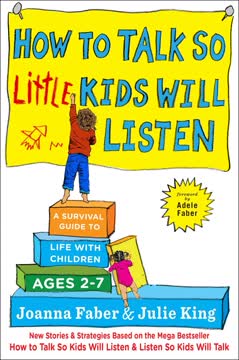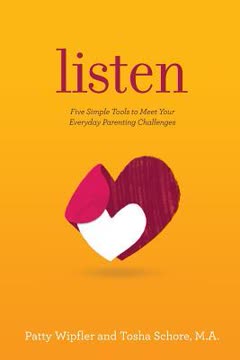Key Takeaways
1. Parenting is Vital, Difficult Work, and Requires Support.
Your importance as a parent is obvious—your children would face danger and heartbreak without you—but it’s oh! so difficult to remember the importance of your work.
Unsung heroes. Parenting is a profound, round-the-clock commitment, often invisible and undervalued by society. From gentle nose-wiping to navigating sibling squabbles, parents perform countless acts of caring daily, shaping their children's character and future generations. This vital work, however, comes with immense challenges, both external and internal, that can deplete even the most dedicated parent.
Societal burdens. External pressures like economic strain, work-life imbalance, and societal criticism intensify parenting stress. Many parents struggle with:
- Lack of preparation, pay, or protection for the demanding role.
- Employment laws and customs that distance fathers from children.
- Poverty, racism, and discrimination that add layers of stress.
- Constant criticism from others, leading to defensive parenting.
These factors make it hard to maintain patience and energy, often leading to self-blame or blaming children.
Internal struggles. Beyond external forces, parents carry emotional baggage from their own upbringing, sometimes unconsciously replaying harsh patterns. Parenting is inherently emotional work, filled with hopes, fears, gratitude, and resentment. Children, with their intense emotional expressions, amplify this. Recognizing these universal roadblocks is the first step toward finding effective, supportive ways to navigate the emotional landscape of family life.
2. Connection is the Key to Your Child's Well-being and Cooperation.
In a nutshell, feeling closely connected helps your child build intelligence, and it helps her use the intelligence she already has.
Brain's blueprint. A child's developing mind thrives on a sense of close connection, as essential as food and shelter. When connected, the brain forms neural pathways for learning, memory, and thought, activating the prefrontal cortex—the center for reasoning, impulse control, and judgment. This connection fosters intelligence and enables cooperation.
Broken connection. However, this vital connection frequently breaks due to threats, frustration, or overwhelming feelings. When a child feels hurt, her prefrontal cortex shuts down, making her unable to think, reason, or control impulses. This leads to "off-track" behaviors like whining, defiance, aggression, or withdrawal, which are actually distress signals: "Emotional emergency! I don't feel connected!"
Innate healing. Fortunately, children possess a sturdy emotional repair process. When a caring adult listens, they instinctively release tension through crying, tantrums, laughter, or trembling. This emotional "poop" clears their system, allowing them to regain their ability to think, cooperate, and feel loved. Your presence and listening during these moments are crucial for their healing and resilience.
3. Special Time: Fill Your Child's Emotional Cup with Focused Attention.
Special Time, the first Listening Tool, will help you to keep this bond of connection strong.
Cream of parenting. Special Time is dedicated, one-on-one time (3 minutes to an hour) where your child leads the play, and you offer undivided attention. Unlike regular interactions, distractions are eliminated, and your child dictates the activity. This focused attention fills their "cup" with connection, deepening trust and providing insight into their inner world.
Transformative impact. This simple tool can alleviate a wide range of behavioral issues, from clinginess at parties to fear of medical procedures. It helps children feel seen, heard, and safe, fostering cooperation and reducing resistance. For example, a mother struggling with morning routines found that 20 minutes of Special Time before chores transformed her daughters' cooperation, leading to peaceful mornings.
Practical application. To implement Special Time:
- Name it: "Special Time" or "Kids Rule Time."
- Schedule it: Set a date and time, and keep your word.
- Child-led: "I'll play anything you want to play!"
- Set a timer: Start short (5-10 minutes) and gradually increase.
- Be present: No multitasking, no advice, no modifying their ideas (unless safety is at risk).
- End with affection: Hug, high-five, and announce the next Special Time.
This practice enriches your relationship, builds confidence, and creates lasting family traditions.
4. Staylistening: Embrace Emotional Outbursts as Healing Opportunities.
Listening is what she needs to heal and to recover.
Healing process. Staylistening means meeting your child's intense upsets—crying, tantrums, fear—with an open heart and staying present until they recover. It's a powerful remedy that builds resilience, helping children bounce back from disappointments and overcome difficulties. Unlike traditional methods that try to stop crying, Staylistening embraces it as a natural, inborn healing mechanism that allows children to think again.
Beyond "fixing." Instead of hushing, distracting, or punishing, you become a calm anchor, sailing with your child through their emotional storms. Your presence and quiet confidence convey deep caring, allowing them to shed corrosive tension. This approach redefines "misbehavior": crying and tantrums are not defiance, but a "Healing Process. Just Add Listening."
How to Staylisten:
- Move close: Offer eye contact and gentle touch (if welcomed).
- Settle in: Emotional release takes time; be patient.
- Speak gently: "I'm sorry it's so hard," "I'm right here for you."
- Keep safe: Protect your child and yourself from harm.
- Let them lead: Allow your child to decide when they are done.
This practice helps children clear emotional backlogs, leading to better sleep, improved cooperation, and increased confidence, as seen in the story of a toddler who overcame separation anxiety after a long Staylistening session.
5. Setting Limits: Firm Boundaries, Followed by Compassionate Listening.
The limits you set will actually bring your child closer to you!
Kind "No." Children need limits for safety, respect, and learning. A good "no" is often the kindest and most necessary word a parent can offer. Hand in Hand Parenting advocates for setting limits not as punishment, but as a way to connect and invite emotional release. This approach helps children process the hurt feelings that drive uncooperative behavior, ultimately improving their judgment and bringing them closer to you.
Beyond training. Traditional discipline often assumes children are uncivilized and need to be "trained" to obey. This approach, however, assumes your child has an innate sense of love, cooperation, and justice. Uncooperative behavior stems from disconnection and hurt feelings, not inherent badness. By stopping misbehavior and then listening, you help your child clear emotional tension, allowing their natural intelligence and cooperative spirit to re-emerge.
Listen, Limit, Listen:
- Listen and think: Assess the situation calmly. Is it a need for information, a shift in expectations, or genuine off-track behavior?
- Bring the limit: Act first, talk second. Make swift, respectful physical contact to stop the behavior (e.g., gently pry fingers from hair, hold an arm).
- Listen: Once the limit is set, listen to the child's emotional response (crying, raging). This allows them to release the underlying tension.
This three-step process, free of harshness or bribes, fosters genuine change. A mother who lovingly limited her son's demand for Olympic merchandise found that his anger turned to tears, and after listening, he felt connected and cooperative.
6. Playlistening: Harness Laughter to Build Confidence and Release Tension.
Laughter is a powerful antidote to stress.
Joyful connection. Playlistening is the art of eliciting unforced laughter in play, where your child feels in charge. It's a heartwarming, creative tool that strengthens connection, builds confidence, and helps children recover from challenging experiences. Laughter, a natural release valve, helps children shed low-level tension and fears, making them braver, more creative, and more experimental.
Power reversal. A key aspect is taking on the less powerful, often befuddled, role. You play the clumsy, silly, or "wrong" one, while your child is swift, sure, and victorious. This playful power reversal helps children release the burden of constantly being instructed and feeling inadequate. For example, a mom struggling with her daughter's preschool separation anxiety used Playlistening by pretending to be the shy one, making her daughter laugh and confidently lead her into school.
Versatile application. Playlistening works for all ages and group sizes, fostering cooperation and easing tensions around:
- Shyness or whining
- Sibling disputes
- Aggressive behavior
- Learning struggles
- Fears (e.g., fear of water, new foods, doctors)
It can also be used to playfully set limits, turning potential power struggles into shared laughter and affection. This tool enriches family life with fun, trust, and a deeper understanding of your child's emotional needs.
7. The Listening Partnership: Your Essential Support System for Parental Stress.
A Listening Partnership is built to tackle the inevitable stress that’s a byproduct of parenting.
Peer support. Parenting is stressful, and everyone needs an outlet. A Listening Partnership is a simple, cost-free tool where you exchange listening time with another parent. You talk about your hopes, concerns, and frustrations, expressing your feelings without judgment or advice. Your partner listens with warmth and respect, and then you reciprocate. This builds trust and helps both partners offload tension.
Emotional release for adults. Just like children, adults benefit from emotional release. Talking, laughing, crying, trembling, and even yawning are natural ways to process stress. A Listening Partnership provides a safe haven to:
- Release mild tension through talking.
- Brush away fears with laughter.
- Process grief through crying.
- Overcome fears through trembling and perspiration.
- Blast away frustration with tantrums (in a safe, private space).
This replenishment of emotional energy makes it easier to connect with your children and find solutions to parenting challenges.
Practical guidelines:
- Find a partner: Someone you trust, interested in parenting, not a close family member or boss.
- Equal exchange: Agree on time (e.g., 5-60 minutes each way).
- Confidentiality: Everything shared is strictly private.
- No advice/judgment: Focus solely on listening and supporting emotional release.
- Refresher questions: Use neutral questions to help your partner transition from talking to listening.
This tool empowers parents to navigate their own emotional projects, leading to greater patience, clarity, and joy in their parenting journey.
8. Emotional Projects: Understand and Navigate Deep-Seated Hurts.
The repeated release of emotion is her ticket out of the rut.
Deeply rooted hurts. Sometimes, a single emotional release isn't enough to permanently change a child's behavior. This indicates a "deeply rooted" hurt, an emotional project that requires repeated visits and emotional release over time. These persistent patterns, like daily meltdowns over getting dressed or intense shyness, are signs that a child is working through significant, stored feelings of threat or helplessness.
Innate wisdom. The concept of emotional projects recognizes the innate wisdom in a child's recurring meltdowns. They are not manipulative but methodical attempts to drain deep-seated hurts. By anchoring your child through these repeated upsets, you help them slowly but surely dissolve the underlying tension, leading to lasting changes in their "personality" or "temperament."
Managing an emotional project:
- Increase reassurance: Boost Special Time and Playlistening to build safety and connection.
- Lower stress: Temporarily reduce triggers or demands (e.g., fewer daycare days, sleeping with parents).
- Listening Partnerships: Regularly offload your own feelings to maintain stamina and clarity.
- Anticipate & plan: Expect difficulties and prepare strategies for connection and limits.
- Set limits & Staylisten: Provide firm, loving boundaries that invite emotional release.
This committed approach, as seen in a boy who overcame deep-seated fears of school after weeks of Staylistening, transforms persistent struggles into opportunities for profound healing and growth.
9. Building Cooperation: Connect First, Then Guide.
When children feel connected to their parents and truly seen, cooperation comes naturally.
Relationship first. Frustration often arises when parents demand cooperation without first establishing connection. Children naturally want to cooperate when they feel close and safe. Approaching cooperation as a partnership, rather than a battle of wills, is key. This means prioritizing connection before making requests, much like chatting with a neighbor before discussing a fence repair.
Balance of "yes" and "no." Foster a cooperative climate by balancing generous "yesses" (like Special Time) with the gift of "no" (Setting Limits). Special Time, where your child leads, builds a foundation of goodwill and generosity. When a child still resists after connection, a firm but loving limit, followed by Staylistening, helps them process the underlying upset.
Tools for cooperation:
- Special Time: Fills their emotional cup, making them more willing to cooperate.
- Setting Limits: Gently stops uncooperative behavior, creating a safe space for emotional release.
- Staylistening: Helps children process the frustration or fear that prevents cooperation.
- Playlistening: Uses laughter and silliness to diffuse power struggles and make tasks fun.
A father who introduced Playlistening into his evening routine transformed dreaded dinners and bedtimes into fun, cooperative experiences, demonstrating the power of connection over control.
10. Toward Sweeter Separations: Heal Fears with Presence and Patience.
Separation upsets are opportunities in disguise!
Universal challenge. Separation is a core challenge for almost every child, triggering fears rooted in their dependence on caregivers. From preschool drop-offs to bedtime, children often express separation anxiety through clinging, tantrums, or refusal. These behaviors are not manipulative but genuine expressions of fear, often stemming from early, unhealed hurts like a difficult birth or past absences.
Beyond bribes and avoidance. Many parents resort to bribes, lying down for hours, or canceling plans to avoid their child's distress. However, these strategies don't resolve the underlying fear. Instead, they reinforce helplessness. The Hand in Hand approach encourages parents to anticipate emotional separations and use Listening Tools to help children process and heal these fears, transforming painful partings into opportunities for growth.
Strategic approach:
- Address your fears: Use Listening Partnerships to process your own anxieties about separation.
- Plan for emotion: Anticipate upsets and allocate time for them.
- Communicate clearly: Inform your child about upcoming separations (where, when, who).
- Staylisten: When tears or clinging begin, stay present, offer reassurance ("I'm right here. You're safe."), and allow the emotional release.
- Playlistening: Use games like peek-a-boo or hide-and-seek to playfully address separation fears and build trust.
A mother who used Staylistening during her son's martial arts class separation found that he not only became confident in class but also showed increased independence and reduced bedtime anxiety.
11. Lifting Fear: Transform Anxiety into Resilience with Loving Support.
Your child can work his way free from the grip of fear, even if he has struggled with fear-driven behavior for quite awhile.
Fear's many faces. Children express fear in diverse ways: aggressive outbursts, screaming, withdrawal, or compulsive behaviors like thumb-sucking or nail-biting. These are distress signals, not deliberate misbehavior. Fear, often rooted in past overwhelming experiences, can resurface unexpectedly, shutting down a child's reasoning and triggering fight, flight, or freeze responses.
Healing through release. Children heal from fear by releasing it through laughter (for lighter fears) and crying, trembling, perspiring, or struggling (for deeper fears). When a child is safely listened to by a loving adult, these intense physical and emotional expressions allow the fear to run its course. The parent's calm, confident presence is crucial, replacing the impression of danger with a sense of security.
Steps to lift fear:
- Parental support: Use Listening Partnerships to process your own fears and reactions.
- Build safety: Increase Special Time and Playlistening to strengthen connection and trust.
- Playful challenges: Use Playlistening to playfully take the less powerful role, helping children laugh away lighter fears.
- Set limits & Staylisten: When fear-driven behavior arises, gently but firmly set a limit and Staylisten, allowing the child to release intense emotions.
A mother helped her son overcome a deep-seated fear of doctors by engaging in "kill the doctor" Special Time, allowing him to playfully take control and release helplessness, leading to a calm and cooperative doctor's visit.
12. Moving Beyond Aggression: Address Fear with Connection and Clear Limits.
Aggressive behavior is almost always beyond a child’s control, no matter how intentional it may seem.
Fear's outburst. Aggression in children—hitting, biting, pushing, grabbing—is almost always a sign of underlying fear and disconnection, not intentional malice. When gripped by fear, a child's reasoning mind shuts down, and survival instincts take over, leading to impulsive, hurtful actions. They may say "I don't care!" but deep down, they desperately want to connect and feel safe.
Beyond punishment. Conventional remedies like punishment, reasoning, or Time Outs are ineffective because they don't address the root cause: unexpressed fear. These tactics can even worsen the situation by adding more hurt and isolation. The Hand in Hand approach focuses on strengthening connection and providing safe outlets for emotional release, helping children move beyond aggression.
Strategies for healing aggression:
- Parental healing: Use Listening Partnerships to process your own reactions to aggression, especially past experiences of being hurt.
- Build connection: Increase Special Time and Playlistening to fill your child's emotional cup and build trust.
- Playful limits: Use roughhousing and playful power reversal to help children laugh away tension and test boundaries safely.
- Firm, loving limits: When aggression occurs, intervene immediately with a gentle but firm physical limit, then Staylisten to the child's intense emotional release.
A mother whose son frequently hit her found that consistent Special Time, combined with Staylistening through his aggressive outbursts, helped him release deep-seated fears, leading to a significant reduction in aggressive behavior and a stronger connection between them.
Last updated:
Review Summary
Listen receives mostly positive reviews for its practical parenting tools focused on connection, emotional intelligence, and listening. Readers appreciate the numerous real-life examples, though some find them excessive or unrealistic. The book's emphasis on gentle parenting and emotional release resonates with many, while others critique its lack of scientific evidence. Some parents report significant improvements in their relationships with children after implementing the book's strategies. However, a few reviewers note the book's length and occasional oversimplification of complex issues.
Similar Books










Download PDF
Download EPUB
.epub digital book format is ideal for reading ebooks on phones, tablets, and e-readers.





